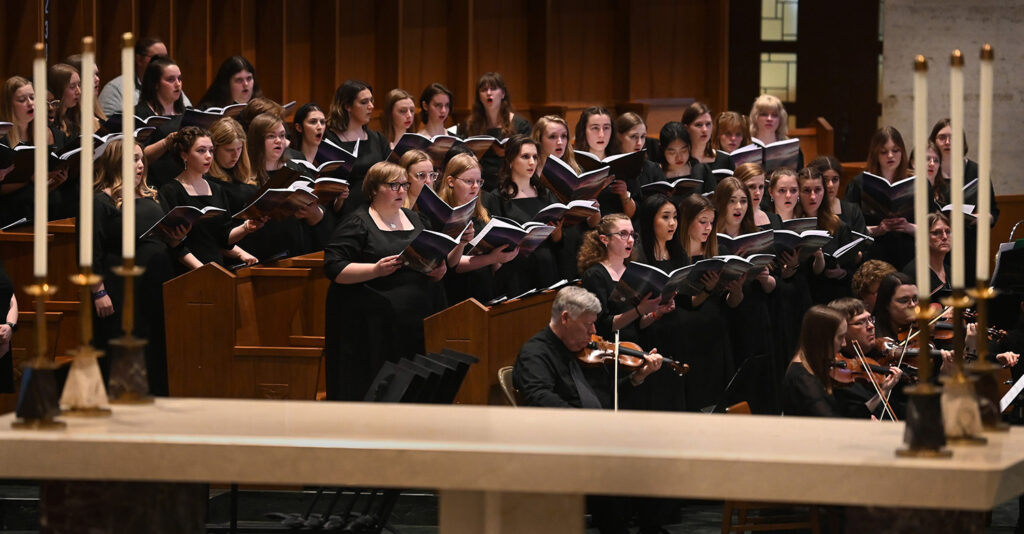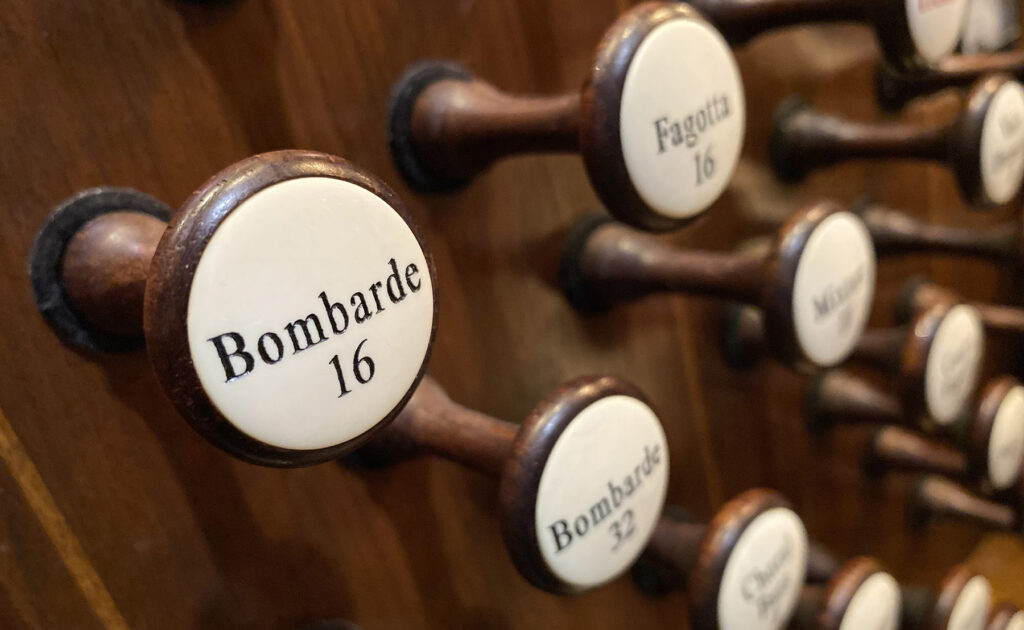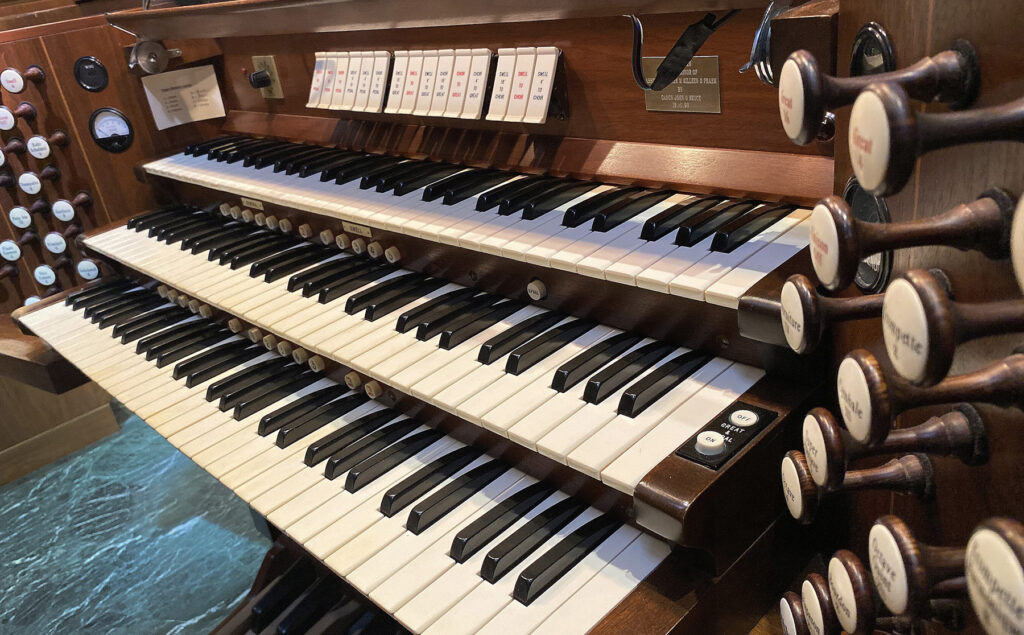Music


A Vibrant Musical Tradition
The Constitutions of the Canons Regular of Premontre make clear the centrality of the Liturgy and music in the life of the Norbertine: “Around the altar on which we make our profession we celebrate day by day the Eucharist and the solemn celebration of the Hours in which we hear the voice of the Lord and respond to him in psalms, canticles, and hymns.” (no. 35).
At St. Norbert Abbey, we are well-known in the Diocese of Green Bay for having a vibrant musical tradition that helps enhance our liturgical life. Several choral groups including mixed choruses, a schola of Norbertines, a women’s schola, and an auditioned college choir add to the beauty and solemnity of the Sunday Mass. A variety of instrumental soloists and ensembles also add to the musical offerings throughout the year.
St. Norbert Abbey’s famed Casavant Frere organ is one of the finest in the country and highly regarded among organists worldwide. It is used every day of the year for Mass and the Liturgy of the Hours. It accompanies and complements the daily chanting of the Hours while supporting and adding to the Mass. Each year, renowned organists from around the world are invited to participate in the Canon John O. Bruce Memorial Organ Concert series.


Organ
St. Norbert Abbey’s Casavant Frere, op. 2529
In the summer of 1957, Professor John Wright Harvey, of UW-Madison, was asked about the design of an organ for the new St. Norbert Abbey Church. Professor Harvey worked up a stop list and suggested that the Abbey contract with the Casavant Brothers of Saint-Hyacinthe, Quebec, Canada to build the instrument. The contract was signed in 1958, and the instrument was delivered in the spring of 1959. Lawrence Phelps was the tonal designer, in his first instrument with Casavant. The organ was installed by Otto Eberly. The dedicatory recital was on June 17, 1959, with Staf Nees as organist.
Several additions have been made to the original organ, including a Voix Humaine, Cymbale III, Resultant 32’, Bombarde 32’, Trompette Prémontré, and a Zimbelstern. The console of the instrument has been completely overhauled with the addition of new stop knobs and an eight level solid state memory bank. These additions were fabricated by the Schlicker Organ Company of Buffalo, N.Y., with the blessing of Casavant. Stanton Peters is the current curator of the organ. The organ, featuring 2,800 pipes, is used every day for the daily liturgies of the Norbertine Community: the Eucharist, Lauds, and Vespers.
“One of the aspects of this organ that amazes me is that even after over a decade of playing it daily, there are still timbres and hidden gems that I continue to discover – ever ancient, ever new,” said Abbey organist Devin Atteln.
Organ Stop List
Great
16’ Quintaton
8’ Diapason
8’ Gemshorn
8’ Bourdon
4’ Octave
2 2/3’ Octave Quint
2’ Super Octave
Fourniture IV
Cymbale III
8’ Trompette
Super and Sub Couplers
Zimbelstern (toe stud)
Swell
8’ Principal
8’ Rohrflöte
8’ Salicional
8’ Voix Celeste
4’ Principal
4’ Flauto Traverso
Plein Jeu III
16’ Contra Fagotta
8’ Trompette
8’ Hautbois
8’ Voix Humaine
4’ Rohr Schalmei
Tremulant
Super and Sub Couplers
Pedal
32’ Resultant
16’ Contra Basse
16’ Bourdon
16’ Quintaton (Great)
8’ Principal
8’ Bass Flute
8’ Quintaton (Great)
4’ Choral Bass
Mixture III
32’ Bombarde
16’ Bombarde
16’ Fagotta (Swell)
8’ Bombarde
4’ Clarion
Choir
8’ Cor de Nuit
8’ Spitzflöte
8’ Spitzflöte Celeste
4’ Prestant
4’ Koppelflöte
2’ Blockflöte
2 2/3’ Nazard
1 3/5’ Tierce
8’ Trompette Harmonique
8’ Krummhorn
8’ Trompette Prémontré (en chamade)
Tremulant
Super and Sub Couplers

